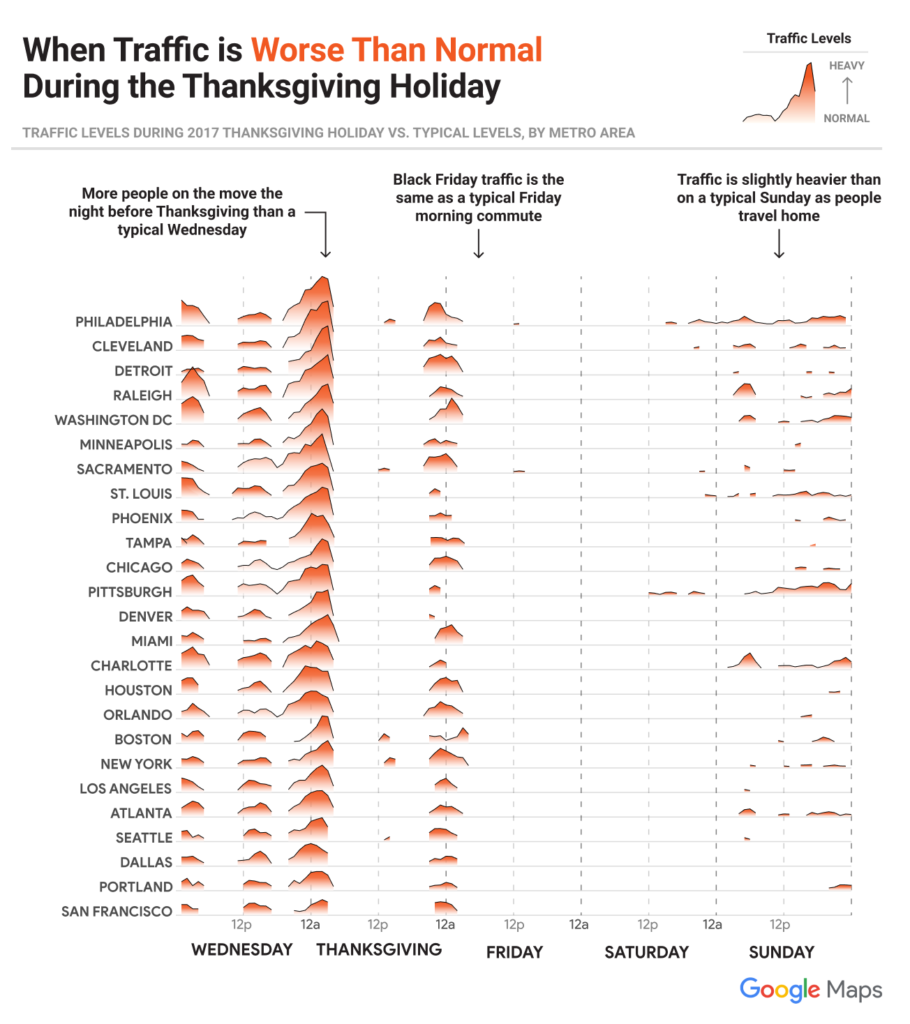
Surviving the holidays with Google Maps: A handy guide
Holidays can be stressful. There is so much planning and preparation, gift shopping, partying and travelling involved that this season can take a toll on mental and physical health alike. And nothing kills the joy of a Thanksgiving road trip more than getting stuck in the holiday traffic. For me, these visuals of Los Angeles’ traffic nightmare are scarier than The Haunting of Hill House:
#MannequinChallenge? Traffic nearly at a standstill on the 405 Freeway https://t.co/yfahcIv8AR pic.twitter.com/ZQndXJwEA3
— ABC7 Eyewitness News (@ABC7) November 23, 2016
So, how can Google Maps help?
Understand Traffic Patterns
You may know your area’s traffic patterns during a normal week, but holidaymakers follow a schedule of their own – with the day before Thanksgiving between 3-4pm being the worst time to hit the road. This handy chart by Google tells when you can expect traffic to be heavier than normal in your area:

You can see it’s best to avoid the Friday/Sunday afternoon rush and leave in the morning instead, after Thanksgiving.
Avoid the Crowds
If you don’t want to waste your afternoon being stuck in a queue at the grocery store, shopping mall, the local bakery, movie theatre, or the liquor store, use this chart to see when you will be able to avoid the crowds at popular places:

Route Search
If you just remembered that Aunt Margaret had asked you to bring some avocados or realized that you’re running out of gas, don’t worry. Simply search along your route on Google Maps and find the nearest place you’re looking for without taking a massive detour.
Share Your ETA
There’s no fun in keeping the family guessing. In its latest update, Google Maps has made its journey sharing feature even better, so you can let the fam know what time you’ll be arriving without needing to make a call or send a text. Simply tap on the ˄ button once you have started the navigation and click ‘Share trip progress.’ You will not only be able to provide your live location to your loved ones, your route information and ETA will also be shared.
If you found the post interesting, head on to this interactive site put together by Google Maps for more insights on Thanksgiving traffic and search trends in your state.







